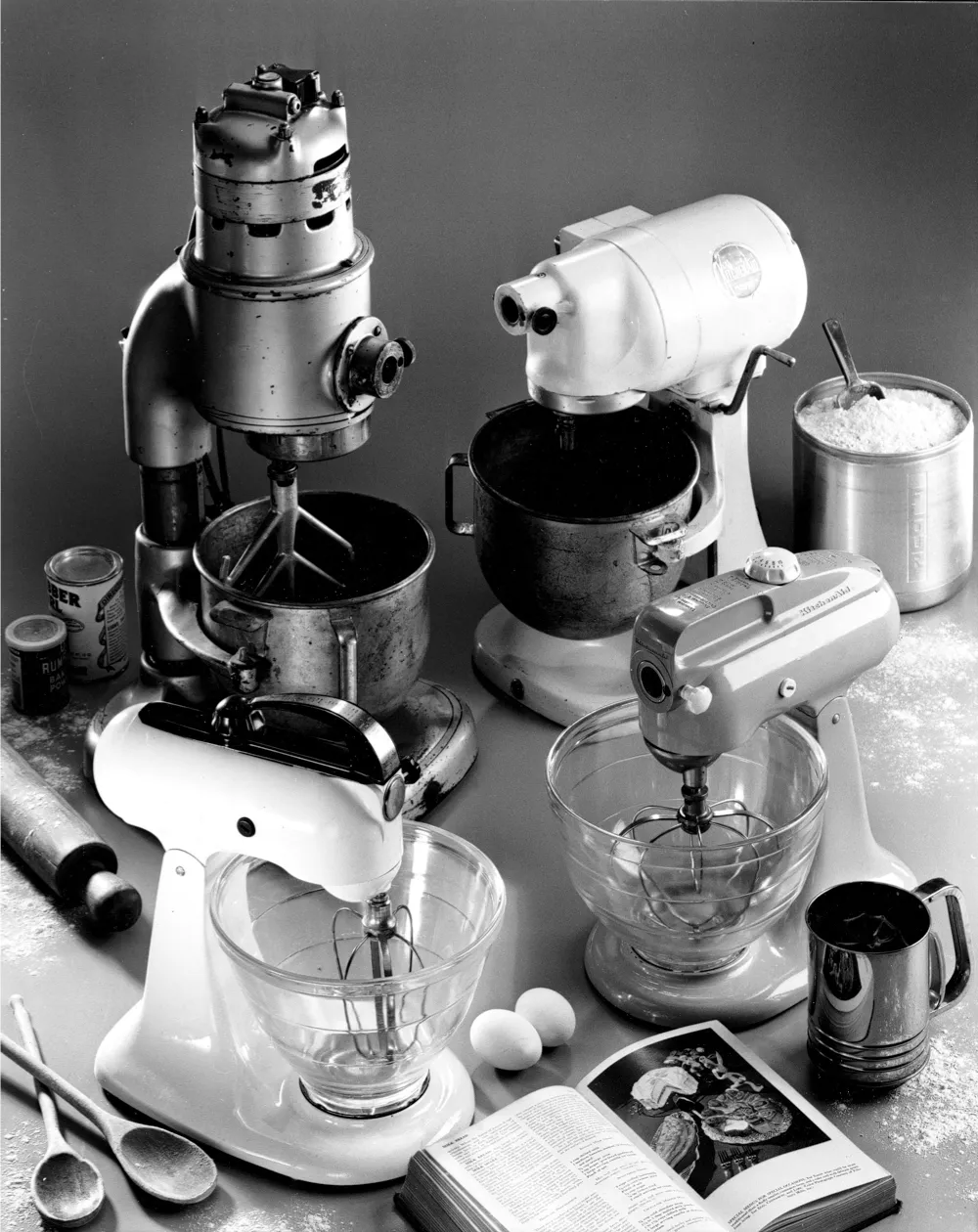A Helping Hand in the Kitchen
When, in 1919, the wife of a director at Hobart Corporation tested an H5 electric stand mixer she exclaimed, ‘I don’t care what you call it, it’s the best kitchen aid I’ve ever had!’ And an icon was born. A century later, what we know as the KitchenAid mixer sits on worktops in kitchens the world over and still assists with kneading dough, mashing potatoes and beating eggs.
In the late 19th and early 20th centuries, inventors competed to dream up and patent appliances that would make domestic tasks less back-breaking. Ohio engineer Herbert Johnson developed his stand mixer after observing a baker mix bread dough with a heavy iron spoon and it immediately took off, selling 20,000 in its first three years. Early users of KitchenAid included Henry Ford, Ginger Rogers and Julia Child. Over the years, new versions of the mixer were produced and, in 1936, Egmont Arens, editor of the Creative Arts magazine and Vanity Fair, who was also a designer, created three of the most elegant models, including the tilt-head K model that has remained virtually unchanged to this day.

Behind the Brand

Nowadays, KitchenAid is synonymous with the colourful stand mixers made popular by pastry chefs and home bakers, but this American company began with another appliance: the dishwasher. In 1886, fed up with servants smashing her heirloom china, Josephine Cochrane patented a contraption that sprayed jets of water onto dishes held in wire racks inside a metal box. Cochrane’s machine was snapped up by New York hotels and developed for domestic use shortly before her death in 1913 – at which point her company was bought by Hobart Corporation. In 1919, when Herbert Johnson created a prototype for the world’s first household mixer for Hobart, KitchenAid became a household name. The famous curves of the stand mixer have stood the test of time and today KitchenAid is a symbol of good quality and endurance.


